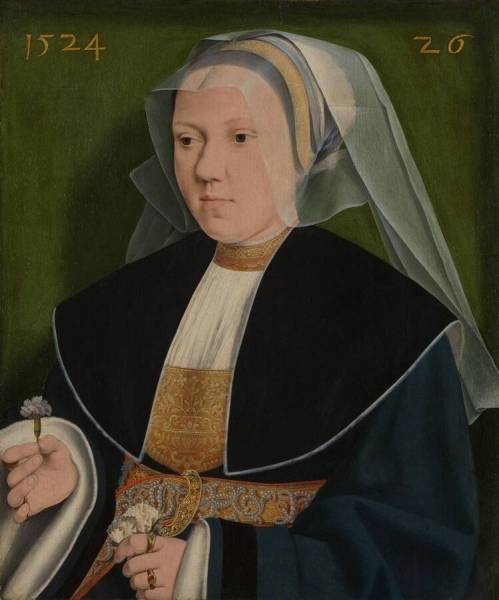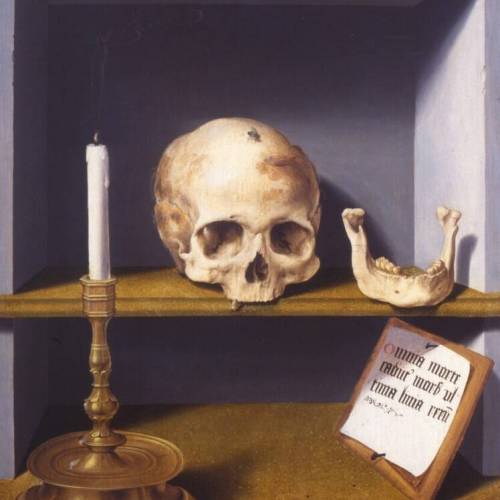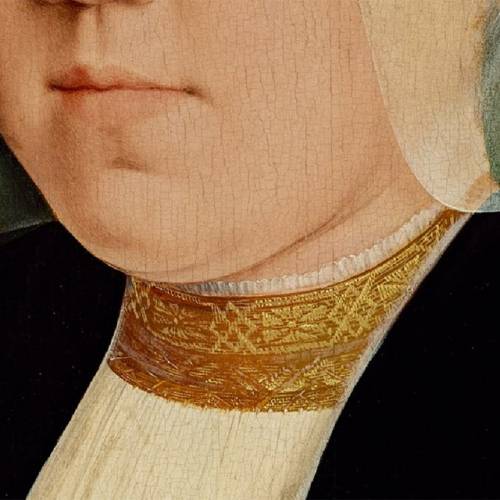Barthel Bruyn the Elder painted this bridal portrait of Margaretha von Mochau a year after her marriage in 1523 to Gerhard von Westerburg. The painting is part of a dyptich. The right panel, which is in the Compton Verney Collection in England, shows Gerhard von Westerburg. Margaretha was 26 years old at the time, as the artist indicates in the top right corner. The carnation that she holds in her hand symbolizes pure love. She offers the flower to Gerhard. A vanitas still life is painted on the back of the portrait. With this kind of painting the artist conveys the message that beauty and life’s pleasures are transitory (‘vanitas’ means ‘transience’, ‘futility’). The skull refers to mortality. The smouldering candle represents the fleeting nature of all worldly things. The Latin phrase ‘Everything perishes through death, death is the end of things’ is consistent with this. The vanitas still life is both literally and figuratively the opposite of the bridal portrait: it shows mortality in contrast to worldly matters.
The woman depicted in this painting was long thought to be Gertraude von Leutz. In the spring of 2021, researchers have discovered, in a 1524 decree from Frankfurt, that the wife of Gerhard von Westerburg was not Gertraude von Leutz, but Margaretha von Mochau.


